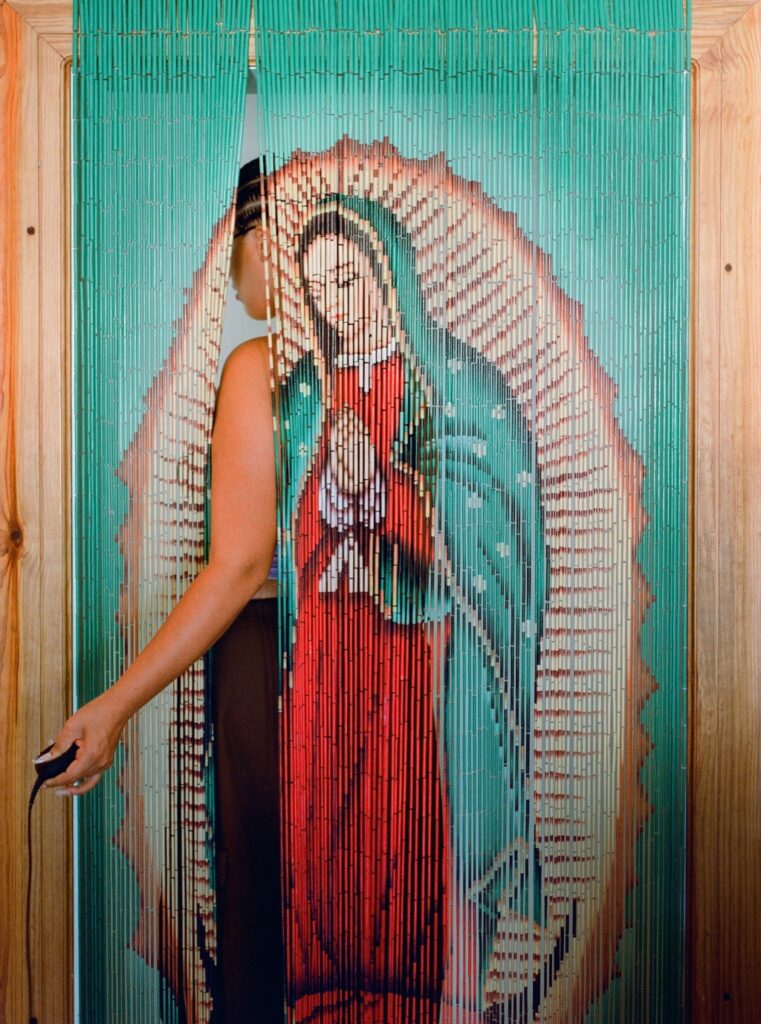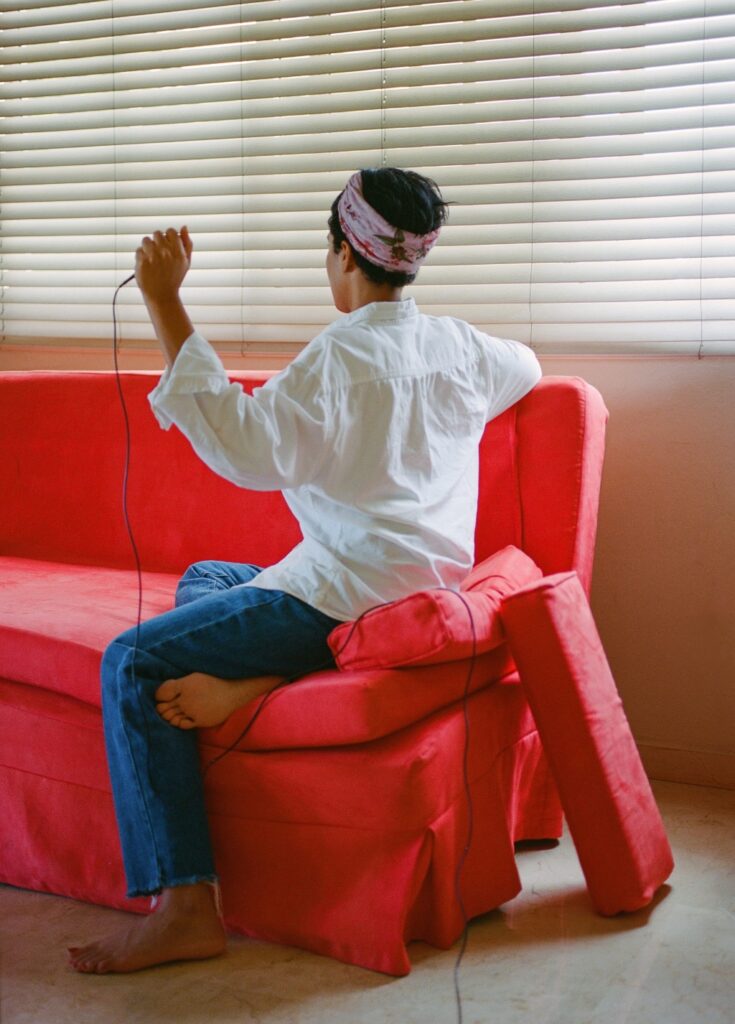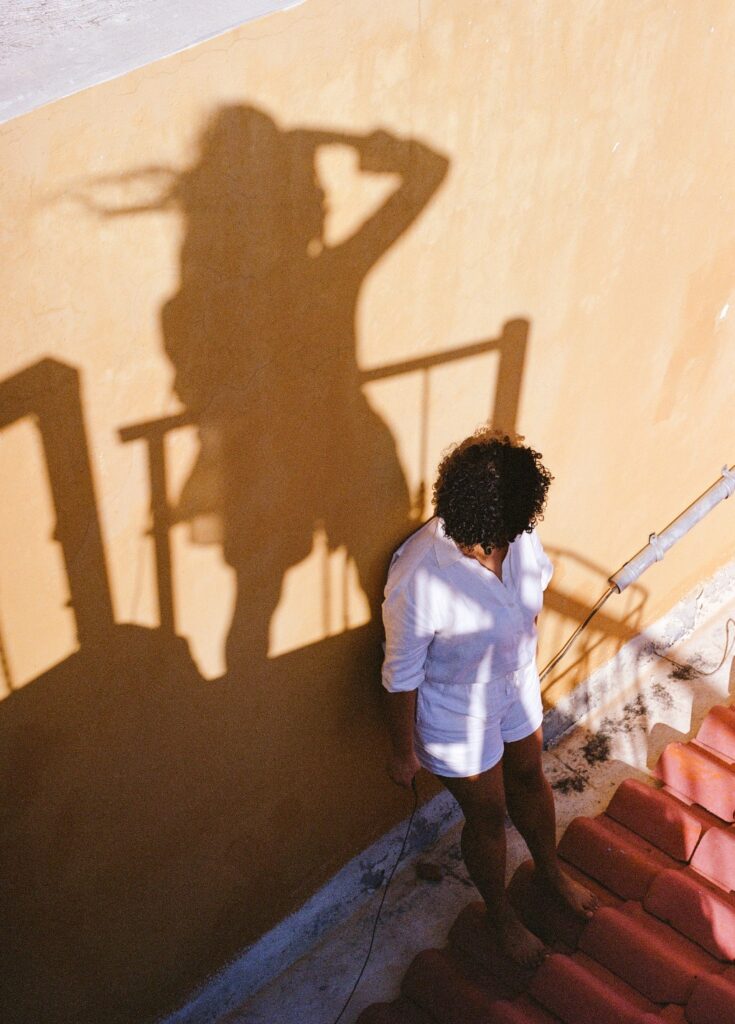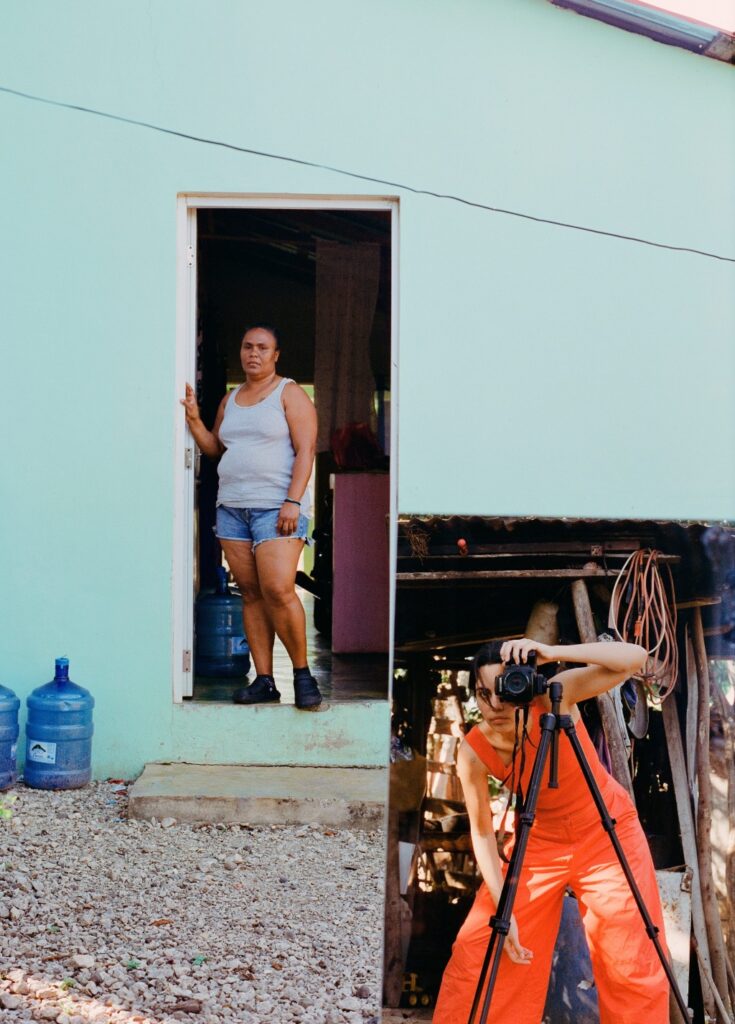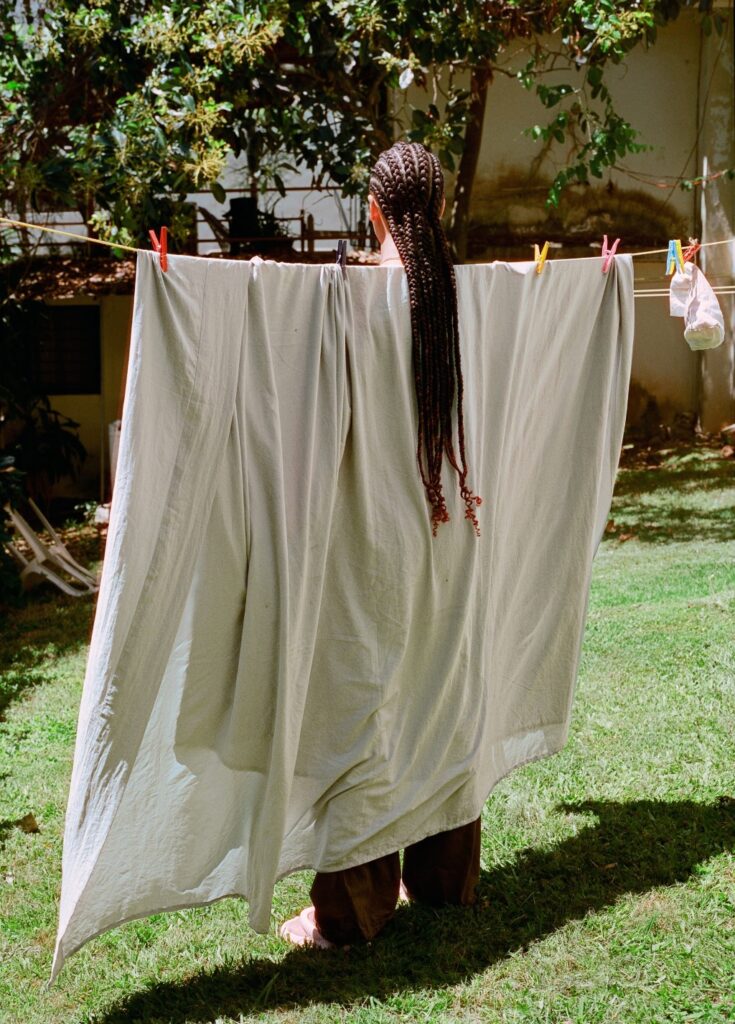Beaded curtains are a familiar feature of bakeries in warm climates, drawn across doorways to fend off winged creatures tempted by sweet delicacies. As if nodding to the tradition, a photo of one is suspended in the window of La Boulangerie!, a gallery in a listed former bakery still distinguished by an unspoiled facade and interior (painted glass ceilings, decorative cement tiles, mirrored walls, gilded lettering) dating from the 1900s.
On March 16, 2024, a sense of spring is in the evening air, and the place is buzzing with visitors gathered to take in the work of Karla Hiraldo Voleau at the opening of the exhibition “Doble Moral, Ongoing.” The only baker in attendance (apart from yours truly) is Simon Baker, director of La Maison Européenne de la Photo, who introduced the Franco-Dominican artist-photographer to curator/gallerist Valeria Diaz Granada, owner of this welcoming capsule of a space in the ninth arrondissement.
The beaded curtain in that photo in the window, bearing a painted portrait of the Virgin Mary, is parted by a woman’s arm, whose hand is pressing a camera’s shutter cable to capture a partial glimpse of her profile. As in most of the photos in this show, her face is concealed.
For this project, Hiraldo Voleau interviewed dozens of women across the island of the Dominican Republic about their illegal abortions and orchestrated their (self-)portraits via a system where the sitters get to pull the trigger, allowing them to call the shots for once in their country, where their right to voluntarily terminate a pregnancy is denied, even if it is nonviable or the result of incest or rape, or if the mother is in danger.
Inside La Boulangerie!, more anonymous portraits are mounted with magnets on the mirrored walls, which give the illusion of space in the small venue. Written on the reflective surface above and below the images are handwritten quotations in French and Spanish from the interviews, providing food for thought and reason for the French to be thankful today, a few weeks after the right to abortion was enshrined in France’s constitution.
“I had to go to work the next day,” we read in the mirror next to one photo. Another: “Sometimes a condom just breaks.” Next to an image of a figure ensconced in a red sofa, with her back turned and the blinds drawn: “Clandestine abortion is dangerous.”
A woman who has an abortion in the Dominican Republic not only risks her life but can also be sentenced to two years’ imprisonment, and the doctor or healthcare worker who performs it up to 20 years.
Says Hiraldo Voleau: “Women of different generations are campaigning to raise awareness about family planning and the dangers of abortive methods ranging from superstitious rituals to dangerous drugs.”
Her project is an act of solidarity, and the support she offers is visible in her pictures, which she refers to as “horizontal,” meaning that there is equal cooperation between the photographer and the photographed. In one image, her helping hand can be seen propping up a mirror for a woman concealed behind a camera. In another, empathy takes the shape of her shadow behind the woman she is photographing, joining forces, offering protection.
Hiraldo Voleau, who studied photography in Lausanne, manages to balance composition and color to serve the subject matter while creating graphically striking pieces.
With all the concealed faces, the visitor does a double take at the sight of an older woman in one photo who catches our eye as she looks straight at us, encouraged by the photographer, whom we see in a mirror. The inscription sheds light on the dark truth: “Neither my daughter nor my granddaughter survived.”
“I was just a little girl myself,” is the quote from a woman concealed by a sheet pegged on a line, her braids almost playfully slung over it. The sheet brings to mind a scene of conception, while the halo around that virgin in the window appears uterine in a certain light, not to say labial. Pretty as a picture pregnant with a thousand censored words.
Profits from the gallery’s sales are invested in the artist’s residence located in the space where the baker’s oven used to be. The odd resident artist can now cook up a storm there and maybe change the way the wind blows.
See our list of Current & Upcoming Exhibitions to find out what else is happening in the Paris art world.
Favorite
